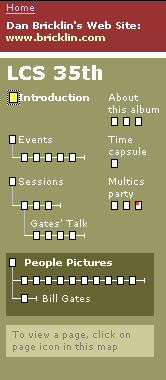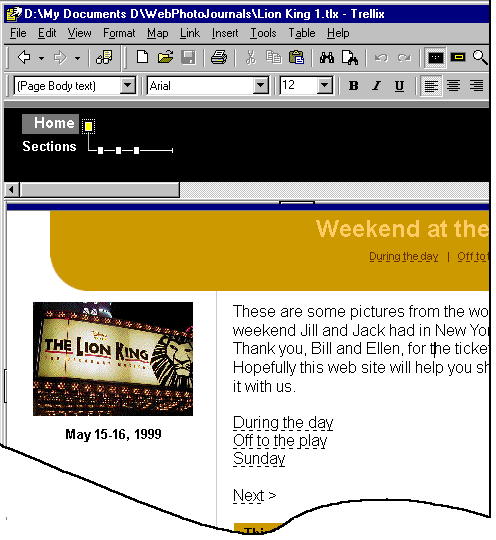| Why do I recommend Trellix Web? |
| Which features help? |
| How do I go about creating my web photo journals? |
| Why do I recommend Trellix Web? |
| Which features help? |
 |
The map gives an overview of the sections of the web photo journal. You can see the use of colored areas and text to organize the pages. The horizontal lines are used to group related pages into sequences. Dragging a page icon while authoring onto a sequence line automatically adds it to the sequence. Trellix Web can automatically create links between pages on a sequence line or create lists of links to all the pages. Click here to open the LCS 35th in another browser window |

| How do I go about creating my web photo journals? |